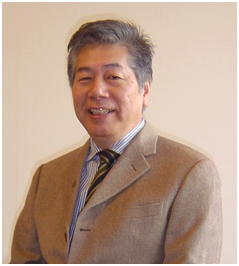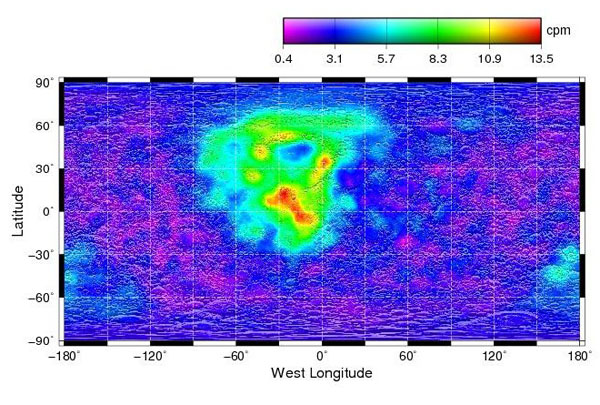
ページ読込中...

ページ読込中...

[English]
| 長谷部 信行 [教授・理工研] |  |
|
| homepage | http://www.hasebe-lab.wise.sci.waseda.ac.jp/html/ | |
| 専門分野 | 宇宙科学・放射線科学 | |
| 研究テーマ・研究活動 | ||
| ○探査機を利用した月惑星の形成と進化の研究 ○高エネルギー宇宙放射線による太陽圏及び宇宙の研究 ○放射線とキセノン媒質との素過程の研究 ○次世代型宇宙放射線検出器の開発 |
||
| ●日本物理学会 ●日本応物理会 ●日本惑星科学会 ●日本地球電磁気惑星圏学会 ●物理探査学会 |
||
宇宙科学の実験的研究を推進しています。主として4つの研究分野から成り立っています。(1)探査機による月・惑星や小天体の形成や進化の惑星科学、(2)天体や宇宙空間で生起している高エネルギー現象の観測による高エネルギー天体物理学、(3)放射線と検出器媒体との素過程の研究、(4)それらの観測・実験分野で要求される次世代観測装置の開発やその周辺技術の開発研究、です。
宇宙科学では“宇宙誕生から現在に至る諸階層と歴史”そして“太陽系内の月・惑星の誕生と進化、太陽系外の多様な惑星系の形成”、について矛盾のない統一的なシナリオで、全体の宇宙像を構築することが最終目的であると思います。本研究室を貫く共通の研究基盤には、この自然界に普遍的に存在する“元素(原子核)”が必然的に関わっています。
月・惑星科学では、太陽系を構成する物質の中には太陽系の基となる始原的物質から地球のように進化した物質が含まれています。そうした惑星などの天体物質の元素や同位体組成の測定を通して、物質中に刻まれている太陽系の初期形成史とその進化がわかります。
一方、高エネルギー天体物理学では、X線、γ線などの電磁波観測、宇宙線中の電子や原子核成分の高精度分光による高精度な観測により、星の生まれる現場や終焉時の超新星爆発の現場の様子が直接観測できるようになっています。こうした隕石・月・惑星の科学観測や宇宙粒子線、電磁波観測を沢山積み重ねていくと、宇宙全体がどのように、生まれ進化して現在のようになったのかという“宇宙像”が見えてくるだろうと考えています。
また、宇宙にはその全質量の約1/4をも担う暗黒物質と呼ばれる正体不明の物質が存在することが分かってきました。それらは我々の身のまわりにも存在していると思われ、その直接的な検出を国際協力で試みています。暗黒物質が検出器内の陽子や中性子と弾性散乱する際の陽子や中性子の反跳を検出しようというものです。現在までのところ、暗黒物質と思われるシグナルは検出されていませんが、より精度の高い実験が計画中であります。暗黒物質の正体を探ることは宇宙の理解を深めるだけでなく、素粒子の世界の解明にも大きな役割を果たすといえます。
これらの研究課題とそれらの観測に関連する宇宙機搭載用の観測装置、次世代型検出器とその周辺技術の研究・開発を重点的に進めています。
| Nobuyuki Hasebe [Professor] |  |
|
| homepage | http://www.hasebe-lab.wise.sci.waseda.ac.jp/html/ | |
| research field | Cosmic Radiation Science | |
| research keywords | ||
| Nuclear Planetology Nuclear Geology Space Science Cosmic Ray Physics Radiation Physics |
||
| link | ||
Experimental Research on Space Science
Experimental research on nuclear planetology, space physics, and astrophysics is conducted in my laboratory. Chemical elements that exist universally in nature are inevitably related to our research. Elemental abundance and its temporal change of materials in planetary bodies or the universe tell us how these bodies form and evolve. With nuclear spectrometers onboard spacecraft or roving vehicles for the Moon, we conduct (1) the study of the formation and evolution of the Moon on the basis of elemental information by the measurement of MeV-gamma rays and neutrons, (2) the elucidation of high energy phenomena that occur on the surface of the Sun and other celestial bodies, (3) basic research on pertinent detector physics of xenon detectors, and (4) research and development for next-generation nuclear instruments and their application to planetary and space observations.
We focus especially on nuclear planetology. The elemental composition of the Moon is important for answering scientific questions on its origin and evolution. Nuclear spectroscopy is the most powerful method for deriving elemental compositions from the spacecraft orbit. We developed a Gamma Ray Spectrometer with excellent energy resolution onboard the lunar orbiter Kaguya. We successfully measured natural radioisotopes and major elements over the Moon, created their global maps, and provided precious data for answering scientific questions about the Moon for planning the future utilization of lunar resources (see Figure).
Highly enhanced precision maps of elements, minerals, topography, magnetic fields, and gravity fields over the whole surface and sub-surface structure of the Moon have been created by Kaguya and other remote-sensing observations. But there are still many questions about the Moon to be solved. Lunar missions are currently based on remote-sensing explorations from orbit. However, landing and roving missions will be carried out in the near future, and the active method of neutron and X-ray irradiation will be indispensable in nuclear planetology. The active method greatly improves spatial resolution for mapping with high spectral resolution and high sensitivity along the roving trajectory. In future, sophisticated gamma-ray, neutron, and X-ray spectrometers combined with neutron and X-ray irradiation shall be developed for roving missions.
SELENE-2, a follow-up to the success of the Kaguya mission, will land on the Moon and investigate the surface, sub-surface, and interior of the moon. In-situ geological and geophysical observations will be conducted to improve our knowledge on the origin and evolution of the Moon. Investigating surface conditions and their potential for in-situ resource utilization will provide key information for future human exploration missions. Therefore, in our laboratory we have been developing next-generation active spectrometers the future lunar missions together with the precise analysis of Kaguya observation data.
 Distribution map of uranium on the Moon measured by the Kaguya Gamma Ray Spectrometer. Understanding the chemical composition of the Moon is important for answering scientific questions about its origin and evolution. The Gamma Ray Spectrometer onboard the lunar orbiter Kaguya measured elements over the Moon and created their global maps, and provided precious data for answering scientific questions about the Moon for planning the future utilization of lunar resources.
Distribution map of uranium on the Moon measured by the Kaguya Gamma Ray Spectrometer. Understanding the chemical composition of the Moon is important for answering scientific questions about its origin and evolution. The Gamma Ray Spectrometer onboard the lunar orbiter Kaguya measured elements over the Moon and created their global maps, and provided precious data for answering scientific questions about the Moon for planning the future utilization of lunar resources.